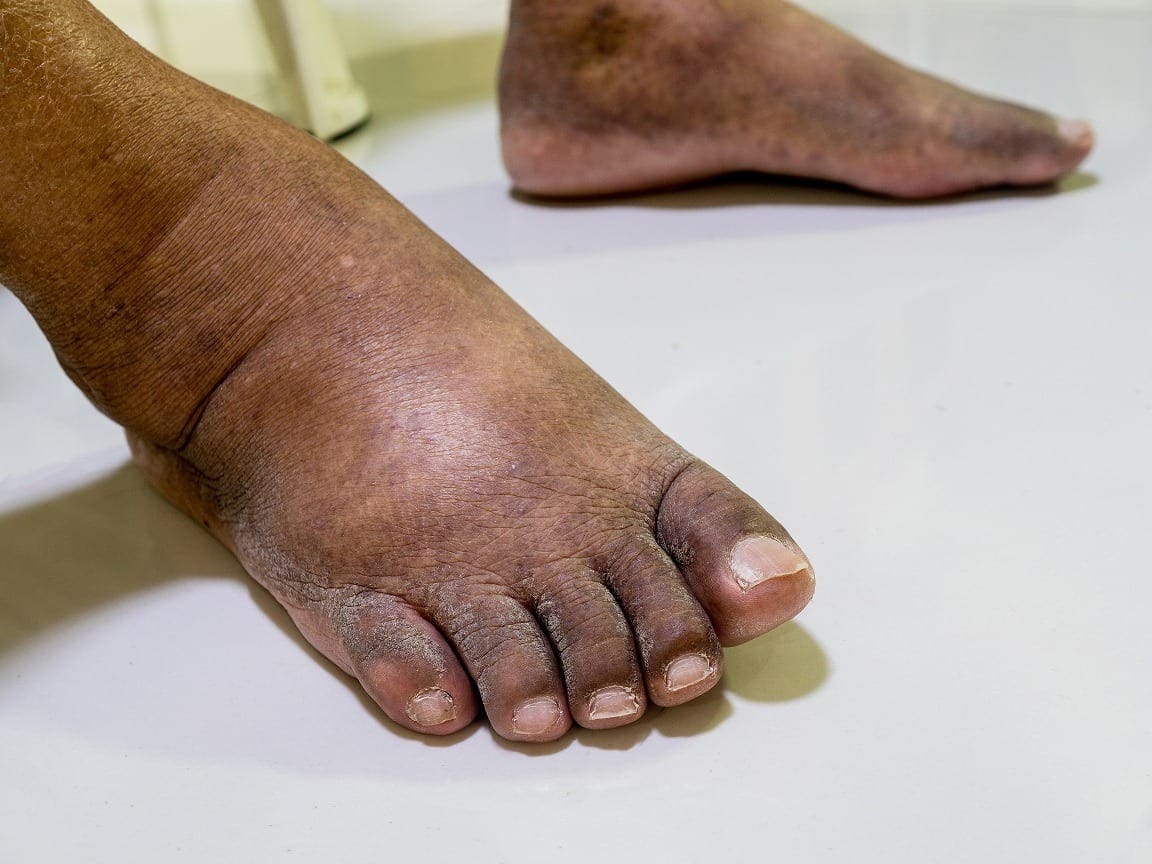
Every single year across the United States, almost 75,000 lower limb amputations occur in diabetic patients that have nothing to do with a trauma-induced incident. The statistics are astounding and eye-opening. What preventative measures can be done to help a diabetics’ foot care needs?
Vascular Health Risk Management had traced these amputations back to being caused by diabetic foot ulcers, which occur in 10 percent of patients with diabetes, with the lifetime risk of developing an ulcer even higher — at 25 percent.
Even more alarming, according to a control-case study done by Pemayun, Naibaho, Novibasari, and Minuljo, up to 15 percent of these ulcers will not heal and a quarter of them will require amputation.
The statistics speak for themselves. A small cut or ulcer on your foot might not seem like much to you. However, if you are living with diabetes, these symptoms can have a negative impact on your life.
If you are living with diabetes, you might be at risk without proper care from your podiatrist. Let us show you the possible trajectory of these issues.
How Can Diabetes Affect Your Feet and Lower Limbs?
Diabetes can have a direct impact on your blood circulation. First, it affects the sensations in your nerve. Then, it affects your ability to heal wounds, fight infections, and your overall skin health.
Diabetes can also cause you to develop peripheral neuropathy, which is the loss of protective sensation or the ability to sense pain. This is one of the most difficult aspects of the disease. The feet need to be inspected on a daily basis either by the patient themselves or a loved one. According to Dr. AJ Boulton, peripheral neuropathy can cause 45 to 60 percent of all diabetic foot ulcers. If left unnoticed, peripheral neuropathy can be just one of the most dangerous aspects of having diabetes.
You might have redness, cuts, sores, irritation, fungal or ingrown toenails, along with foot ulcers. These ailments can all lead to infections. If they are left untreated, they could lead to a needed amputation.
This is where we come in. A diabetic’s foot care needs are essential to managing the disease. Making the annual visit to a podiatrist can lower the risk of developing any of these ailments as doctors play an essential role in managing diabetes with the focus on overseeing foot-related complications.
How Can a Foot and Ankle Doctor Help Diabetics?
A podiatrist, or foot and ankle doctor, can play a vital role in amputation prevention. At the annual visit, we will perform foot screenings for early recognition of any of the symptoms we mentioned above.
What Are We Looking For?
When performing these screenings, we will be checking you for these warning signs:
- Ingrown or fungal toenails
- Numbness or tingling in the feet and toes
- Pain anywhere in the legs
- Changes of color in the skin
- Dry cracks in the skin
- Open and slow-healing sores
- Swollen feet or ankles
- Bleeding corns and calluses
By checking for these symptoms, we can identify and treat them. And in extreme cases, we can control an infection before it spreads out further. In an overall monitor of the health of your feet, we can also provide you with helpful information on your specific concerns. And we can provide you with care and advice that will help your overall living condition.
In the most extreme or mild cases, a patient may require foot care every couple months for monitoring and to avoid a problem from spreading. Furthermore, we will treat you for the simplest of corrections, for example, toenail trimming on a patient that is diagnosed with neuropathy.
If it is necessary, we are trained for surgical correction and we can take care of many deformities of several different cases and different foot problems that may occur and can have an influential impact and create a possible risk of worsening.
As we care for your feet, we may suggest a change in shoes or even will give you a prescription for new shoes and orthoses for your feet. These adjustments in your day to day life can increase your prevention of various complications from developing and can manage deformities already set there, like bunions and hammertoes. These specialized shoe inserts or even the prescription shoes with increased depth in the toe can stop irritation from spreading and can prevent the breakdown of the skin.
Through an assessment of the damage that has already occurred, if we notice a wound located on your foot, our early detection and treatment can help keep it from recurring.
However, if you are already at the point where prevention is no longer effective, surgery might be the only option. Undergoing a small operation can easily correct a bunion or hammertoe before an ulcer is formed.
The Bottom Line
We cannot ignore the facts. According to the CDC, diabetes and pre-diabetes influence the lives of over 100 million people across the country. Of those millions, two hundred and fifty million of them don’t even know they have the disease.
You can take preventative measures to manage your diabetes, once you know that you have it. Diabetes is certainly about blood sugar management. But you must also know how to take care of your feet.
In one study “Evidence-based management of PAD & the Diabetic Foot” by Brownrigg, Apelqvist, Schaper, Bakker, and Hinchcliffe, research showed that following an amputation, up to 50% of people with diabetes will die within 2 years.
So if you have diabetes, don’t let it get out of hand and your foot health get away from you.
Contact us for an appointment today to help manage your diabetes. At the Foot and Ankle Clinic of the Virginias, we can assess your foot and ankle health, and help you lead your healthiest and best life.
Diabetes can control much of your life if you let it. But more importantly, you can control your diabetes.

